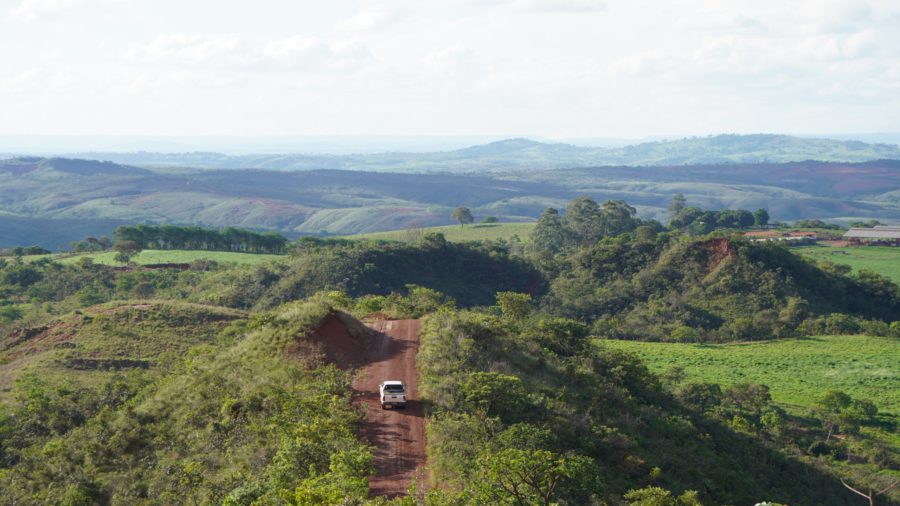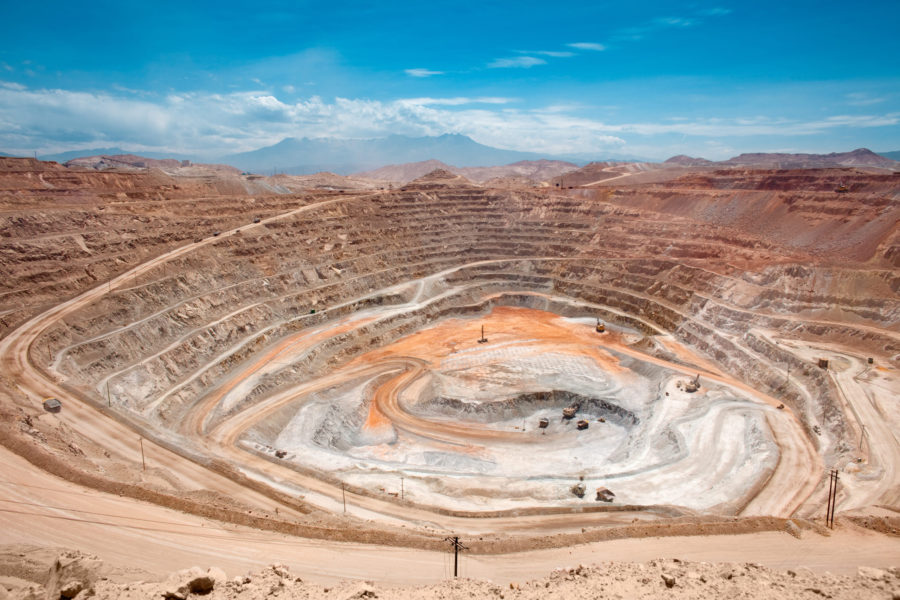Saskatchewan juniors in a most excellent adventure
In the history of mineral exploration, the quest for uranium is really in its infancy. Gold, silver, copper, iron and tin exploration, mining and refining can be traced back almost 10,000 years in some form.
Uranium wasn’t identified until 1789 and not isolated until 1841. Work done by Madame Currie lead to the first practical use of radioactivity, the common X-Ray machine. In WWI over a million patients had X-Rays taken and at the same time radiation treatment of cancer was born using radium.
Uranium ore was found in 1900 by the Geological Survey of Canada near the present Port Radium in Saskatchewan. The first Canadian commercial mine was called Eldorado and began production in 1930 – the principal uses of uranium being pigments, ceramic glazes, and a yellow-green fluorescent glass and as a source of radium for medical purposes.
Otto Hahn and Fritz Strassmann discovered nuclear fission in 1939. The Eldorado mine was taken over by the Canadian government in 1943 and produced the uranium for the atomic bombs dropped on Japan. Eldorado Mining and Refining remained owned by the Canadian government until 1988 when it merged with SMDC the predecessor company of Cameco.
 “
“
Exploration for uranium ore began in earnest in 1942 under direction of the government for military purposes. A wartime ban on private prospecting was lifted in 1947, which led in the early 1950s to the discovery of major deposits near Elliot Lake, Ontario, and northern Saskatchewan. By 1959, 23 mines and 19 treatment plants were in operation, and Canada’s C$330 million in uranium exports exceeded the value for every other mineral.
A second burst of exploration in the 1970s resulted in major discoveries in the Athabasca Basin in northern Saskatchewan. Mines at Rabbit Lake, Cluff Lake and Key Lake started up in 1975, 1980 and 1983, which up until 2000 accounted for most of Canada’s uranium production (14,223 tonnes of U3O8 in 1998).” World Nuclear Association
Athabasca Basin
Uranium prices were weak after the early post war demand subsided. It wasn’t until the mid 1960’s prices improved and exploration increased.
The Athabasca Basin is an ancient sedimentary basin located along the Northern Alberta-Saskatchewan border south of Lake Athabasca. The Basin covers approximately 100,000 square kilometers in Saskatchewan and a small portion of Alberta. With the Port Radium area thoroughly explored a consortium flew an airborne radiometric survey over the sandstones of the Basin in 1967.

Follow up on the survey resulted in the discovery of the Rabbit Lake mine in 1968.
The “Athabasca Basin” legend was born resulting in a huge staking rush by juniors and in particular large multinational oil companies. This was the beginning of a prolific period of ongoing uranium discoveries incomparable to any other domain in the world.
When the Cluff Lake D Zone was found in 1969, the Athabasca Basin become host of the highest grade uranium deposit ever found up that time.
In 1975, the richest open-pit deposit in the world was discovered at Key Lake.
More than 15 uranium deposits totaling over 1.4 billion pounds of uranium have been discovered in the region since the Rabbit Lake mine discovery back in 1968
Today the Athabasca Basin of northern Saskatchewan hosts the world’s largest and richest high-grade uranium deposits accounting for approximately 15 percent of global primary uranium supply.
Athabasca uranium deposits have grades substantially higher than the world average grade of about 0.1% U3O8. The two dozen or so known uranium deposits within the Athabasca Basin have average grades of more than 3.0% U3O8.
Unconformity-related deposits
One thing almost all economic uranium deposits have in common is that the uranium is remobilized from one area and re-precipitated in a host rock where chemical conditions are conducive to concentrating the uranium in higher concentrations.
An unconformity is a time gap in the rock record between two rock units. The lower unit may be deformed, brecciated or altered while the overlying units are less deformed. Uranium deposits occur in both the underlying and overlying units.
In the underlying units, there may be a weathering zone, fault zone or some other feature that increases the rocks porosity and permeability. In the overlying units, it may be the sandstones or some other features that allows the concentration of uranium.

The deposits in the Athabasca Basin can occur below, across and immediately above the unconformity, with the highest grade deposits situated at or just above the unconformity (eg Cigar Lake and McArthur River).
The initial discoveries were found through surface indicators – radioactive boulders, geochemical anomalies in the surrounding lakes and swamps and geophysical signatures. Hydrothermal fluids associated with high grade uranium deposits will cause extensive alteration of the host rock, resulting in displacement and removal of minerals/elements, creating porosity and subsequent density contrast. This density contrast will be expressed as a gravity low anomaly and is a prime drill target when qualified by other coincident indicators of uranium mineralization such as geochemistry and radon.
Today, all of Canada’s uranium production is from unconformity-related deposits – Key Lake, Cluff Lake, Rabbit Lake (Cluff Lake, Key Lake and the original open pit at Rabbit Lake have now been mined out, underground mining continues at Rabbit Lake), and McClean Lake and McArthur River deposits. Other large, exceptionally high grade unconformity-related deposits currently being developed include Cigar Lake (averaging almost 20% U3O8, some zones over 50% U3O8).

Patterson Lake South
In 2013 seemingly not a single day went by without a news release about another company staking claims in the area surrounding Patterson Lake South (PLS) and citing recent drill assay results from Fission Uranium Corp. TSX.V:FCU as the reason why.
Fission’s exploration success, that sweet smell of discovery (seven zones on trend along a strike length of 1.78km with all seven zones remaining open in all directions), has created renewed exploration interest in Canada’s province of Saskatchewan, uranium and in the junior resource market.
The importance of Fission’s discovery cannot be overstated in the context of Saskatchewan exploration and the markets in general. This kind of good news can excite the market for the entire junior exploration sector. Also area plays, where one company makes a discovery, then dozens of other companies rush in to stake all around them, are one of the very foundations of our junior markets.
Fission’s assays are spectacular, here’s two:
- Hole PLS14-129: intersected 36.72m of total composite off-scale (>9999 cps) mineralization at shallow depth.
- Hole PLS13-075: intersected 21.65m total composite off-scale and assayed at 21.76% U3O8 over 21.5m.
Area Play
Located at the southwestern edge of the Athabasca Basin of northern Saskatchewan, Canada the Patterson Lake South uranium play has the potential to go for several years as field crews are mobilized to the area and news flow will be constant from almost all the companies involved.
Fission’s discovery has sparked a land rush, there are an increasing number of savvy explorers and market players staking whatever land they can get surrounding the discovery area. A select few companies will be buy and hold for drill results and many others will present trading opportunities.
Given very legitimate, and increasing daily, concerns about growing country risk, and a very real looming uranium supply crunch, this is an extremely timely article about what is a truly exciting uranium area play. And it certainly doesn’t hurt investor’s prospects that Canada’s Province of Saskatchewan is one of the most geologically prospective and pro-mining jurisdictions in the world today.
All the elements of a new area play are here:
1) A spectacular new discovery, with new geology or a twist on old geology.
2) A jurisdiction with safe and reasonable tenure.
3) An area amenable to mineral exploration and development.
The Patterson Lake South area play juniors (and a couple of majors – Cameco & Areva) are gathering for what could be one of Canada’s most important uranium discoveries. There is huge upside potential in any of these juniors if they make another discovery. One drill hole could send their (and their neighbors) share price soaring.

In alphabetical order here are a few companies that I found very interesting, (most are running drill/exploration programs right now), and have singled out.
Azincourt Uranium TSX.V:AAZ – On January 20th Azincourt and JV partner Fission 3.0 TSX.V:FUU announced a $1mm 8-10 hole drill program including radon surveying and ground geo-physicals had commenced on their Patterson Lake North (PLN) property.
Aldrin Resource Corp. TSX.V:ALN – Plans a 3,000 m winter drilling program to test priority basement conductors on its 12,000 hectare Triple M Uranium Property. These basement conductor targets are located within the 1984 hectare southeast block of the Triple M Property. Aldrin’s SE block is located adjacent to the south boundary of Fission Uranium’s PLS discovery property at Patterson Lake.
Canadian International Minerals TSX.V:CIN – CIN has exposure to 59,987.177 hectares of mining claims proximate to PLS. On Monday, February 10, 2014, the Company’s common shares began trading on a consolidated basis – ten (10) old shares for one (1) new share. As a result of the consolidation, there will be approximately 8,313,350 common shares issued and outstanding.
Forum TSX.V:FDC – Forums Clearwater Project is located adjacent to Fissions Patterson Lake South discovery. Forum’s northernmost claim, staked immediately southwest of Fissions ground is interpreted to be on strike with the conductive trend that hosts the high-grade uranium mineralization on the Patterson Lake South project. Forum is conducting a $900,000 winter drill and ground EM survey program with 3,000 meters (12 holes) of drilling planned. Drilling should start by mid-February.
NexGen Energy Ltd. TSX-V:NXE – Announced that it has commenced a two drill, 6,000 meter program on the Rook I project. On February 19th NexGen announced it has discovered a new zone of uranium mineralization on the Rook 1 project. The Arrow prospect represents a totally new zone of uranium mineralization in the SW Athabasca basin and is completely unrelated to any other known occurrence in the region. The Rook I project is immediately adjacent to, and on trend, northeast from Fission Uranium’s high-grade uranium discovery, Patterson Lake South (“PLS”) project.
Purepoint Uranium Group TSX.V:PTU – Announced the commencement of its winter drill program at its Hook Lake Project. This project is a joint venture with AREVA Resources Canada Inc. and Cameco Corporation and is located immediately north of Patterson Lake. The 2014 diamond drill program will focus on the highly prospective “Patterson Lake Corridor”, the same electromagnetic conductive trend that hosts the Patterson Lake South uranium discovery.
Conclusion
As the story at Fission’s Patterson Lake South project unfolds (Fission is undertaking a $20mm 2014 work program) I believe we can expect exciting times for those investors who get involved with the various companies participating in, what still are, very early days of this developing area play.
Canada’s Province of Saskatchewan has a stable geopolitical environment and a tremendous wealth of mineralization. History has proven time and time again that junior exploration stocks can write a very exciting discovery story and reward investors with multiple returns on their capital. It is still very early days in the Patterson Lake South area play and the greatest rewards lie ahead of us.
Is the Patterson Lake South uranium area play on your radar screen?
If not, it should be.
Richard (Rick) Mills
 Richard lives with his family on a 160 acre ranch in northern British Columbia. He invests in the resource and biotechnology/pharmaceutical sectors and is the owner of Aheadoftheherd.com. His articles have been published on over 400 websites, including:
Richard lives with his family on a 160 acre ranch in northern British Columbia. He invests in the resource and biotechnology/pharmaceutical sectors and is the owner of Aheadoftheherd.com. His articles have been published on over 400 websites, including:
WallStreetJournal, USAToday, NationalPost, Lewrockwell, MontrealGazette, VancouverSun, CBSnews, HuffingtonPost, Beforeitsnews, Londonthenews, Wealthwire, CalgaryHerald, Forbes, Dallasnews, SGTreport, Vantagewire, Indiatimes, Ninemsn, Ibtimes, Businessweek, HongKongHerald, Moneytalks, SeekingAlpha, BusinessInsider, Investing.com and the Association of Mining Analysts.
Please visit www.aheadoftheherd.com
***
Legal Notice / Disclaimer
This document is not and should not be construed as an offer to sell or the solicitation of an offer to purchase or subscribe for any investment.
Richard Mills has based this document on information obtained from sources he believes to be reliable but which has not been independently verified.
Richard Mills makes no guarantee, representation or warranty and accepts no responsibility or liability as to its accuracy or completeness. Expressions of opinion are those of Richard Mills only and are subject to change without notice. Richard Mills assumes no warranty, liability or guarantee for the current relevance, correctness or completeness of any information provided within this Report and will not be held liable for the consequence of reliance upon any opinion or statement contained herein or any omission.
Furthermore, I, Richard Mills, assume no liability for any direct or indirect loss or damage or, in particular, for lost profit, which you may incur as a result of the use and existence of the information provided within this Report.
More News
Resouro boosts titanium resource by 37% at Tiros project in Brazil
Total resources are now 1,400 Mt1 at 12% TiO₂ and 4,000 ppm TREO, the company said.
April 09, 2025 | 04:37 pm
Prime Minister Mark Carney vows to speed permits, make Canada energy superpower
The Liberal Party leader said at a campaign stop in Calgary that his government would create a Major Federal Project Office with a “one project, one review” mandate.
April 09, 2025 | 03:34 pm
Peru mining chamber sees copper output up 2-4% this year
That would put Peru's copper production between 2.79 million and 2.85 million metric tons.
April 09, 2025 | 02:53 pm
{{ commodity.name }}
{{ post.title }}
{{ post.excerpt }}
{{ post.date }}




Comments